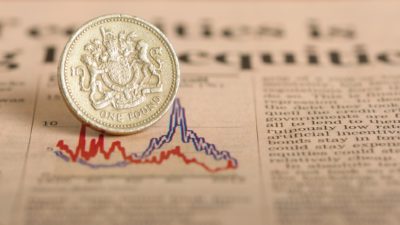We’ve seen a number of FTSE 100 firms cut their dividends this year, and City analysts reckon more companies could follow suit in the year ahead.
Today, I’m looking at whether Unilever (LSE: ULVR) and J Sainsbury (LSE: SBRY) could be dividend-disappointers or great picks for 2016 and beyond.
Unilever
Consumer goods giant Unilever is powered by a stable of great brands, across the food and drink, household cleaning and personal care categories. Combine the brands with global scale, including excellent exposure to emerging markets — where rising incomes will provide a tailwind for decades to come — and you’ve got a top-class business capable of delivering reliable long-term growth.
The table below shows some key earnings and dividend data (in the Anglo-Dutch company’s reporting currency of euros).
| 2012 | 2013 | 2014 | 2015 forecast | 2016 forecast | |
| Earnings per share (€) | 1.53 | 1.58 | 1.61 | 1.84 | 1.92 |
| Dividend per share (€) | 0.97 | 1.08 | 1.14 | 1.21 | 1.28 |
| Dividend cover | 1.6x | 1.5x | 1.4x | 1.5x | 1.5x |
As you can see, there is a trajectory of earnings ticking steadily higher each year, and the dividend following suit with cover maintained at around the 1.5x level.
The earnings progression is actually even smoother than the numbers above suggest, if you remove the volatility of exchange-rate movements. For example, 2014’s 2% earnings per share (EPS) growth would have been 11% but for a 9% adverse currency impact, while 2015 is showing the reverse effect: at the half-year stage Unilever reported 8% EPS growth bumped up to 16% by an 8% positive currency impact. Even with swings in exchange rates, though, Unilever’s upward progression of EPS — and the dividend — is more consistent than you’ll find with many a company.
Having said all that, for UK investors there is the additional variable of the euro/sterling exchange rate when it comes to the dividend, which sometimes works for and sometimes against UK investors.
For the current year, Unilever is shaping up to deliver a sterling dividend of around 86.8p, giving a yield of 3% at a recent share price of 2,880p. For 2016, the yield rises to 3.1%, with a 90.1p dividend forecast based on current exchange rates.
Unilever’s yield is a long way from being the highest in the market, but I believe the potential for long-term reliable growth makes the company a great dividend pick for 2016 and beyond.
Sainsbury’s
The exchange rate on dividends is one thing that doesn’t come into play with UK supermarket Sainsbury’s. However, despite selling the kind of products Unilever makes, Sainsbury’s dividend history and outlook are far less impressive than that of the consumer goods producer.
The table below shows some key earnings and dividend data for Sainsbury’s.
| 2012/13 | 2013/14 | 2014/15 | 2015/16 forecast | 2016/17 forecast | |
| Earnings per share (p) | 30.8 | 32.8 | 26.4 | 22.0 | 21.6 |
| Dividend per share (p) | 16.7 | 17.3 | 13.2 | 10.8 | 10.6 |
| Dividend cover | 1.8x | 1.9x | 2.0x | 2.0x | 2.0x |
As you can see, Sainsbury’s earnings hit the buffers in 2014/15, and are set to fall further this year and next. Management took a decision not to maintain the dividend in the face of falling earnings (which would have reduced cover), but to maintain cover of 2x (thus reducing the dividend). As such, the 13.2p payout of 2014/15 was 24% below the previous year, and further cuts are forecast: 18% this year, followed by 2% in 2016/17.
The supermarket sector has become more competitive than ever in recent years. A big weekly shop at a family’s favourite out-of-town superstore is now largely a tradition of a bygone era. With no-frills upstarts Aldi and Lidl gaining market share hand over fist, Waitrose and local upmarket grocers thriving, and new entrants in the online food space, revenues and margins are under pressure at Sainsbury’s (and the other big mid-market players).
Sainsbury’s current-year forecast dividend of 10.8p gives a yield of 4.2% at a recent share price of 256p. However, with poor prospects of near-term dividend growth — and considerable uncertainty about how the sea-change in the supermarket industry will impact Sainsbury’s profitability in the longer term — I see Unilever as being a much superior dividend pick for 2016 and beyond, despite its lower immediate yield.







